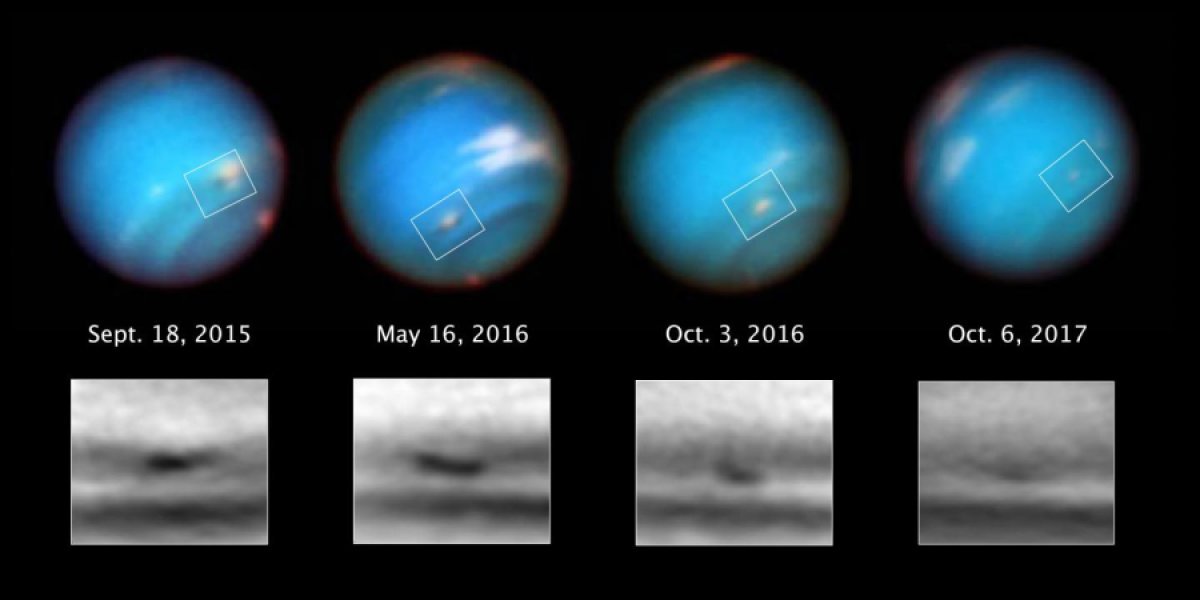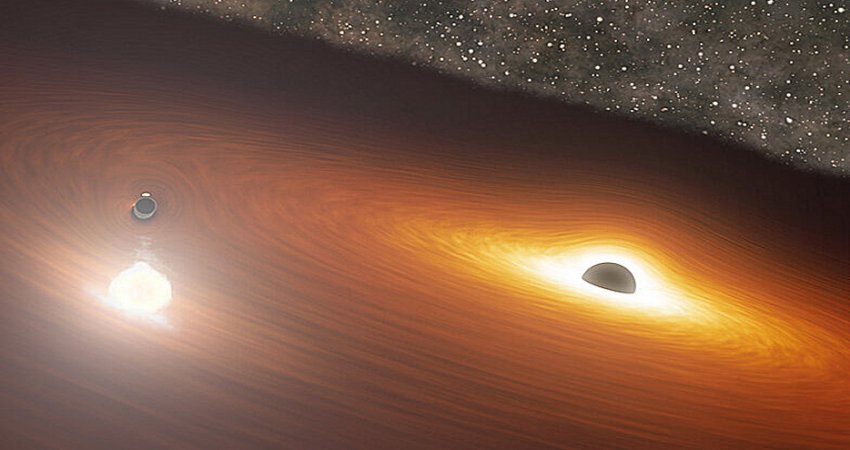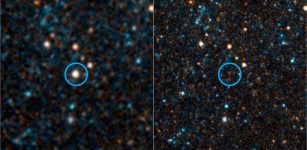Neptune’s Mysterious Shrinking Storm Observed By Hubble
MessageToEagle.com – Neptune’s gigantic storm – once big enough to stretch across the Atlantic Ocean from Boston to Portugal – is now shrinking out of existence.
This event is taking place three billion miles away on the farthest known major planet in our solar system. It has been recorded in pictures of Neptune taken by NASA’s Hubble Space Telescope, first seen in 2015.

Immense dark storms on Neptune were first discovered in the late 1980s by NASA’s Voyager 2 spacecraft. Since then, only Hubble has had the sharpness in blue light to track these elusive features that have played a game of peek-a-boo over the years. Hubble found two dark storms that appeared in the mid-1990s and then vanished.
Like Jupiter’s Great Red Spot (GRS), the storm swirls in an anti-cyclonic direction and is dredging up material from deep inside the ice giant planet’s atmosphere. The elusive feature gives astronomers a unique opportunity to study Neptune’s deep winds, which can’t be directly measured.
The dark spot material may be hydrogen sulfide, with the pungent smell of rotten eggs. Joshua Tollefson from the University of California at Berkeley explained, “The particles themselves are still highly reflective; they are just slightly darker than the particles in the surrounding atmosphere.”
“We have no evidence of how these vortices are formed or how fast they rotate,” said Agustín Sánchez-Lavega from the University of the Basque Country in Spain. “It is most likely that they arise from an instability in the sheared eastward and westward winds.”
The dark vortex is behaving differently from what planet-watchers predicted.
“It looks like we’re capturing the demise of this dark vortex, and it’s different from what well-known studies led us to expect,” said Michael H. Wong of the University of California at Berkele.
“Their dynamical simulations said that anticyclones under Neptune’s wind shear would probably drift toward the equator. We thought that once the vortex got too close to the equator, it would break up and perhaps create a spectacular outburst of cloud activity.”
Wong added that no facilities other than Hubble and Voyager have observed these vortices.
Wong’s paper appears online in the Astronomical Journal on Feb. 15, 2018.
MessageToEagle.com










